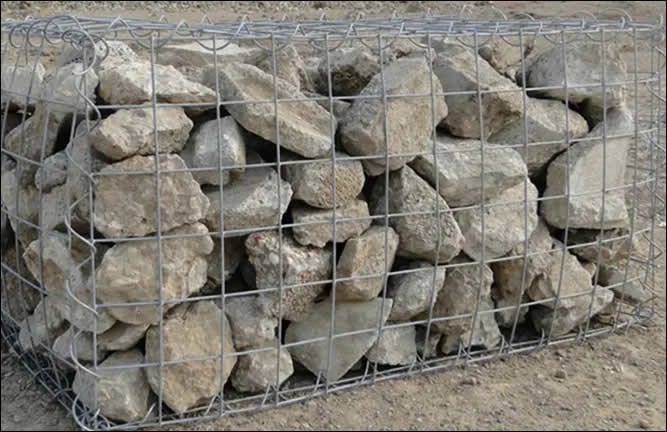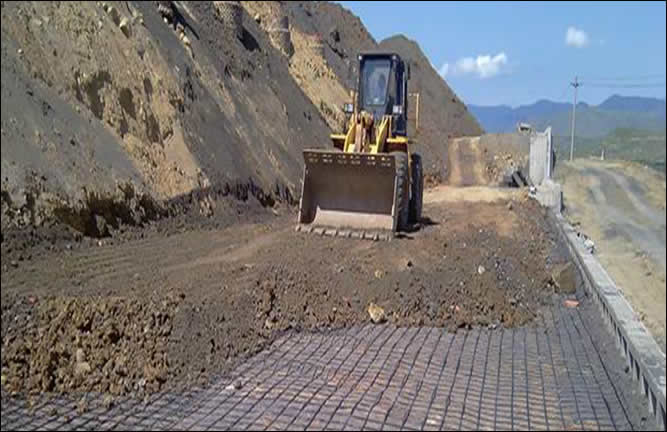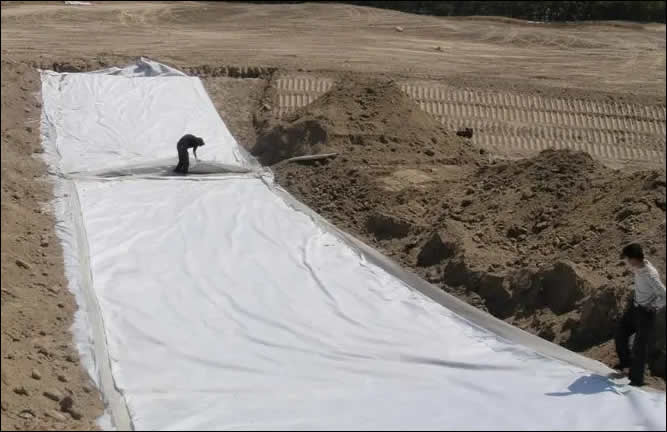Gabion Boxes, Geogrids, and Geotextiles in Soil Conservation and Riverbank Protection Projects
Gabion boxes, geogrids, and geotextiles are widely used together in such projects as soil conservation and riverbank protection to prevent soil erosion, stabilize riverbanks, and maintain ecological balance.
Gabion boxes offer erosion control, act as retaining structures, and aid in hydraulic management. Geogrids provide soil reinforcement, load distribution, and erosion control, while geotextiles contribute to filtration, separation, and erosion control functions.
Gabion Boxes:
Gabion boxes are wire mesh containers that can be filled with stones or other suitable materials. They serve multiple purposes in soil conservation and riverbank protection projects:
Erosion Control: Gabion boxes act as erosion control measures by stabilizing slopes, preventing soil movement, and reducing the velocity of flowing water. They provide structural integrity to embankments and help resist the forces exerted by water flow.

Retaining Structures: Gabion boxes can be used to construct retaining walls and revetments along riverbanks. They effectively retain soil and provide stability to vulnerable areas, such as cut slopes or riverbanks, minimizing the risk of erosion and failure.
Hydraulic Structures: Gabions are also utilized in the construction of hydraulic structures like weirs and check dams. They facilitate water management, control sedimentation, and contribute to the ecological balance of rivers and streams.
Construction Tips:
Proper Design: The design of gabion structures should be based on thorough engineering analysis, considering factors such as soil conditions, hydraulic forces, and anticipated loads. This ensures the stability and effectiveness of the gabion system.
Quality Materials: High-quality galvanized steel wire mesh should be used for constructing gabion boxes to ensure durability and resistance to corrosion. The stones or fill material placed within the gabion boxes should be well-graded and suitable for the intended purpose.
Proper Installation: Gabion boxes should be correctly placed and securely connected to create a stable structure. Adequate care should be taken to ensure proper alignment, sufficient overlap, and effective interlocking of the wire mesh panels during installation.
Drainage Considerations: Adequate provision for drainage is crucial when incorporating gabion structures. This can be achieved by incorporating geotextile filters to prevent clogging and promote efficient water movement within the gabion system.
Geogrids:
Geogrids are geosynthetic materials consisting of a network of integrally connected ribs or strands. They offer the following benefits in soil conservation and riverbank protection projects:
Soil Reinforcement: Geogrids provide soil reinforcement by improving the stability and load-bearing capacity of the soil. They are commonly used in reinforced soil structures, such as retaining walls and slopes, to mitigate the effects of soil erosion and prevent slope failure.

BIAXIAL GEOGRID (20K N/M PRODUCT SPECIFICATION )
Structure Polymer
Biaxial oriented Polypropylene
| Property | Unit | Test method | Value |
| Aperture size | MD (mm) CD mm |
Nominal | 43.7 41.9 |
| Ultimate tensile strength | MD kN/ mtr CD kN/ mtr |
ASTMD 6637 | 24.8 19.4 |
| Strain at ultimate | MD% CD% |
ASTMD 6637 | 8.6 8 |
| Tension at 2% Strain | MD kN/ mtr CD kN/ mtr |
ASTMD 6637 | 11.1 8.5 |
| Tension at 5% Strain | MD kN/ mtr CD kN/ mtr |
ASTMD 6637 | 20.7 16 |
| Junction Strength | MD kN/ mtr CD kN/ mtr |
GR 1-GG 2 | 26.0 19.9 |
| Flexural rigidity | MD mg-cm CD mg-cm |
ASTMD 1388 (Modified) | 509221 503875 |
| Roll Width | M | Minimum | 3.9 |
| Roll Length | Mtr | Minimum | 50 |
Load Distribution: Geogrids distribute applied loads over a wider area, reducing localized stresses within the soil. This characteristic is particularly valuable in areas with weak or unstable soils, where geogrids can help improve the overall stability and performance of the soil mass.
Erosion Control: Geogrids can be used in combination with erosion control blankets or mats to reinforce the soil and enhance its resistance to erosion. They help in vegetation establishment and provide temporary support until plants are fully established.
Construction Tips:
Proper Selection: The choice of geogrid should be based on the specific project requirements, including soil characteristics, anticipated loads, and design considerations.
Installation Guidelines: Geogrids should be installed with proper connection and tensioning of the geogrid to achieve the desired reinforcement and load distribution.
Soil Interaction: Geogrids require good interaction with the soil for effective reinforcement. Adequate soil compaction and proper embedment of the geogrid within the soil are essential to maximize its performance and achieve the desired stability.
Geotextiles:
Geotextiles are permeable fabrics to enhance soil conservation and riverbank protection projects:
Filtration: Geotextiles act as filters, allowing water to pass through while retaining soil particles. They prevent the migration of fine particles, maintaining the stability of the soil and protecting against clogging of drainage systems.

Separation: Geotextiles provide a separation layer between different soil layers or materials with varying properties. This prevents the mixing of soils, stabilizes embankments, and enhances the overall performance of the project.
Erosion Control: Geotextiles can be used in erosion control blankets or mats to protect soil surfaces from erosion caused by water flow or wind. They promote vegetation establishment, provide temporary stabilization, and reduce surface runoff.
Construction Tips:
Proper Selection: Geotextiles should be selected based on factors such as permeability, strength, and durability, considering the specific requirements of the project.
Installation: Geotextiles should be installed with proper overlap and securely anchored to prevent displacement during construction and ensure effective performance. Attention should be given to proper placement, especially around pipes, drains, and other structures.
Protection during Installation: Geotextiles are susceptible to damage during construction activities. Adequate precautions should be taken to protect the geotextile from punctures, abrasion, and excessive UV exposure during installation.
